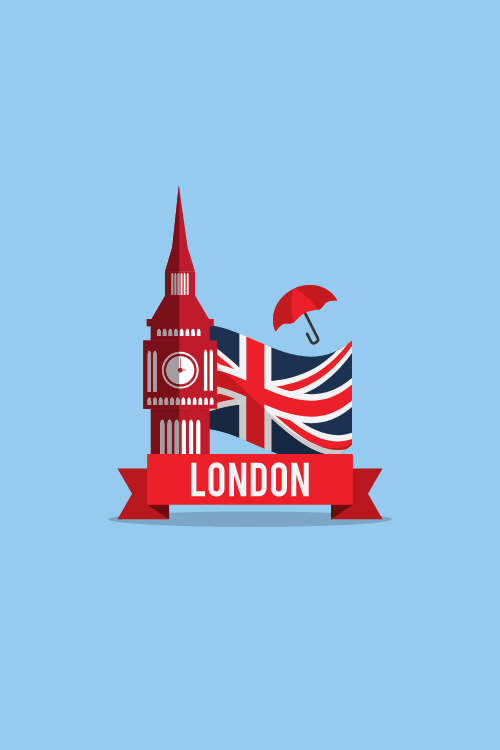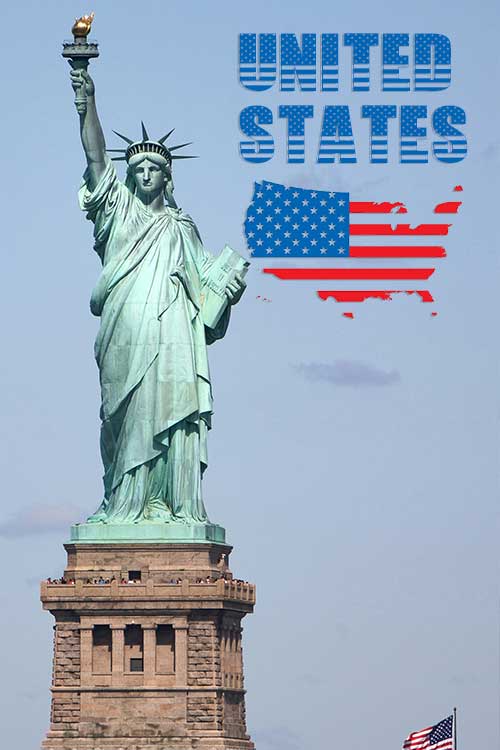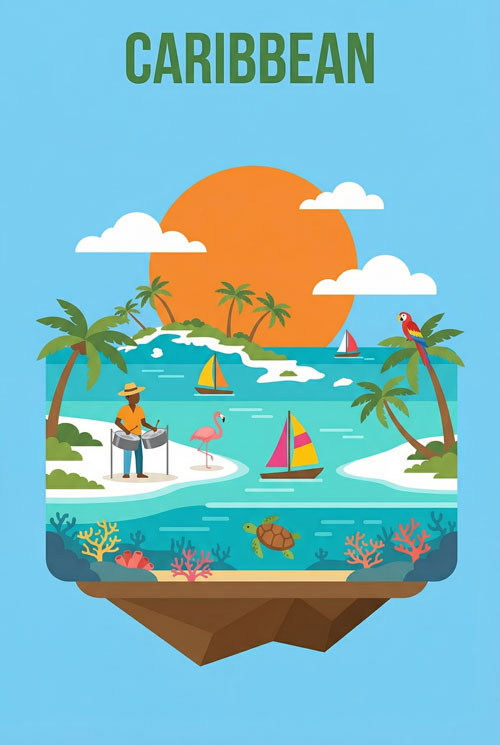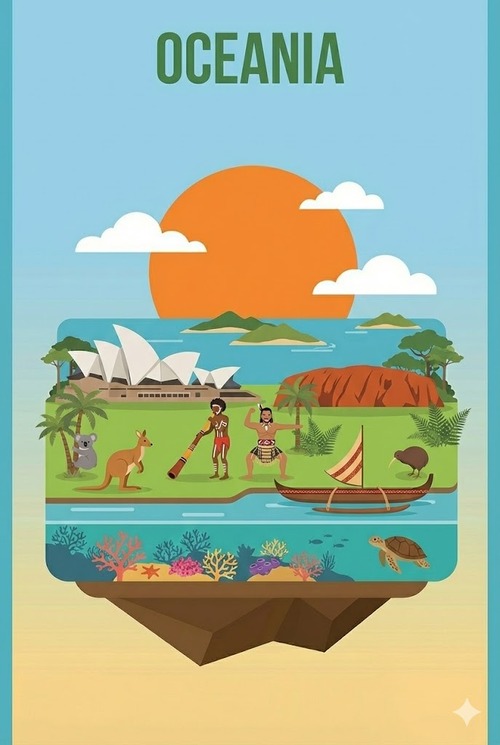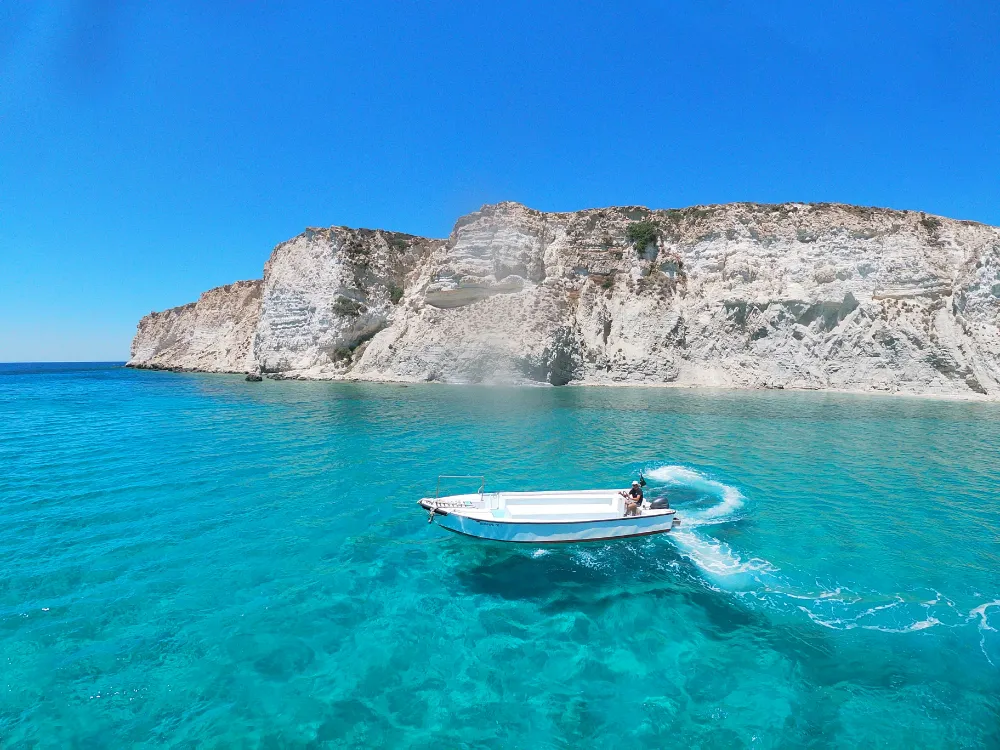eSIM Greece
Best Greek Islands for Beaches: The Complete Logistics & Planning Guide
Most travelers end up on Santorini or Mykonos in July, pay triple rates, and fight crowds of 15,000-plus daily visitors.
There’s a better way.
The best Greek islands for beaches aren’t always the famous ones. Milos, Koufonisia, Naxos, and Crete offer warmer water, lower prices, and manageable crowds if you know when and where to go.
In this guide:
- You’ll get exact ferry routes with current 2025 costs.
- You’ll see monthly water temperatures for each island. You’ll find real accommodation prices at budget, mid-range, and splurge levels.
Most importantly, you’ll learn specific timing tactics to avoid crowds and save 25-35% on your total trip cost.
Most beach seekers ignore water temperature data and shoulder season pricing. They also don’t know that visiting a popular beach before 10am or after 4pm cuts crowds by 60-70%. Small adjustments. Huge differences.
Which Island Matches Your Priorities
Before diving deep, here’s what you need to know fast. If warmest water matters most, choose Zakynthos or the southern Ionian islands. They’re 3-5 degrees Fahrenheit warmer year-round than the Cyclades. If you want sandy beaches for families, Crete, Naxos, and Paros excel. If crowds scare you, Milos and Koufonisia stay manageable even in August. If budget is tight, May or early June beats July by 30-40% on accommodation while water temps reach 72-75 degrees Fahrenheit.
Each island has trade-offs. Crete has incredible beaches but requires the most travel time from the mainland. Mykonos and Santorini have the best nightlife but charge 40-60% more than quieter alternatives. Zakynthos offers warm water and dramatic cliffs but has fewer direct ferry connections. Understanding these trade-offs upfront saves money and frustration later.
This guide focuses on eight islands with the strongest beach reputations and practical accessibility. Crete, Milos, Paros, Naxos, Lefkada, Zakynthos, Koufonisia, and Mykonos round out the list. Each gets a deep dive with beach details, accommodation examples, ferry info, and crowd tactics you won’t find elsewhere. For those seeking your favorite Greek islands beyond these options, consider adding Rhodes or Kos from the Dodecanese Islands to your itinerary—both offer gorgeous beaches and rich archaeological sites.
Island-Hopping Logistics: Ferry Routes, Times, and Costs
Getting between islands is easier than most travelers think, but ferry logistics confuse people. Routes, schedules, and costs change seasonally. In July and August, major routes have multiple daily sailings. In May or September, you might see four to five sailings per week. Winter months (November through April) drop to two or three weekly, and some routes suspend entirely.
Here’s what you need to know about the main ferry hubs. Piraeus Port in Athens connects to almost every Greek island across the Aegean. Rafina Port (closer to Athens airport) handles some Cyclades routes. From Crete, Heraklion Port is the main hub. Most ferries between the Cyclades islands (Paros, Naxos, Milos, Koufonisia) run two to three hours maximum.
Sample ferry routes and typical costs in high season (July-August):
Paros to Milos takes two to three hours and costs €15-25 per person. Naxos to Koufonisia is ninety minutes and runs €12-18. Paros to Naxos is just forty-five minutes at €8-14. These aren’t fixed prices. Book a week ahead and you’ll save 10-15% compared to walk-on fares.
Crete to Zakynthos is trickier. There’s no direct ferry in summer. You’ll take an overnight ferry from Heraklion to Patras (twelve to fourteen hours, €40-80), then a bus to Zakynthos Port (two hours), then a ferry to the island (one hour, €8-12). Total time: sixteen to eighteen hours. It’s tedious but doable for island-hoppers.
Frequency matters. In July-August, Paros-Naxos-Milos routes have multiple sailings daily. By June and September, expect once or twice daily. In May, you’re looking at four to five sailings per week. This changes your island-hopping strategy. In shoulder season, you can’t bounce between islands every day. Plan longer stays on each island or choose fewer stops.
Ferry tickets book online through Ferryhopper or individual ferry company websites. Walk-on passengers don’t need reservations in shoulder season. In high season, book vehicles and cabins ahead. Passenger-only tickets usually book one to three days before departure. Prices fluctuate based on demand, so checking prices across a few dates helps you find cheaper sailings.
Stop Overpaying in Roaming Fees (Or Wasting Time Hunting for Local SIM Cards)
Overseas travel often means choosing between outrageous roaming charges or scrambling for local SIM cards the moment you land.
One drains your budget. The other steals time away from your holiday.
Smart travelers are now switching over to eSIMs.
eSIMs give you data at a fraction of the cost of what your telco charges for roaming and most modern phones have eSIM technology set up – (although you’ll need to check your phone’s compatibility here).
How eSIM4.com Works:
- Step 1: Pick your destination and data plan
- Step 2: Scan our QR code (takes 3 minutes)
- Step 3: Land overseas with instant local network access
No queues. No tiny plastic cards. No bill shock.
Just seamless, affordable data from the moment you land.
Stop letting phone companies raid your travel budget. Join the smart travelers who’ve already switched.
Get Your eSIM NowBest Times to Visit: Monthly Water Temperatures and Seasonality
Water temperature determines whether you’ll actually swim comfortably. Vague advice to “visit in summer” misses the real story. June water temps vary wildly by island. The Cyclades (Paros, Naxos, Milos, Koufonisia) sit around 72 degrees Fahrenheit in June. That’s cool. Not freezing, but cool enough that sensitive swimmers hesitate.
July and August are optimal. Cyclades islands reach 78-80 degrees Fahrenheit. Crete stays around 77-78 degrees. Zakynthos and other Ionian islands hit 80-82 degrees, three to five degrees warmer across the board. September still feels like summer, with water temps around 75 degrees in the Cyclades, 77-78 in the Ionian. You’ll find fewer crowds and 25-35% lower accommodation prices.
May brings warmer days (70-75 degrees Fahrenheit, daytime) but cool water at 68-70 degrees. Many tourists skip May. That’s a mistake. Water temperature improves each week in May. Late May hits 70-72 degrees. More importantly, accommodation costs 30-40% less than July. Restaurants stay open. Ferries run regularly. You trade slightly cool water for cheaper everything and empty beaches.
October is risky. Early October mirrors late September with 72-74 degree water. But by late October, temperatures drop to 65-68 degrees. Many island restaurants and hotels close mid-October through April. Ferry schedules become sparse. Unless you specifically want fewer tourists and don’t mind chilly water, October is trickier than it seems.
November through March: Most beach facilities close. Water reaches 55-60 degrees Fahrenheit. Ferry schedules cut in half. Hotels offer deep discounts, but you’re not actually beach-swimming. Winter works if you want hiking, history, and solitude. For beaches, it’s not ideal.
Peak season (mid-July through August) brings 40-60% higher accommodation rates. Paros mid-range hotels jump from €200-280 per night (June) to €280-400 (July-August). Milos does similar spikes. Crete’s rates climb from €160-240 (June) to €240-340 (July-August). These aren’t small differences. Shifting your trip even one week earlier saves hundreds of euros.
Top Beach Islands: Detailed Profiles
Crete: The Largest Island with Diverse Beach Types
Crete dominates discussions about best Greek islands for beaches because it has the most variety. Southern coasts get warmer, more sheltered water. Northern beaches see more development but offer amenities. Elafonissi Beach on the southwest coast is the crown jewel: soft white sand, shallow water perfect for families, and dramatic pink-hued cliffs. It’s a two-hour drive from Chania. Water reaches 77-78 degrees Fahrenheit in August. Facilities include organized sections with umbrellas and loungers for €10-12 per day.
Balos Lagoon sits two hours from Chania on a dirt road. It’s dramatic and shallow. Families love it. That also means crowds in summer. The lagoon creates protected, warm water around 76-78 degrees by August. There’s minimal shade. Bring an umbrella or arrive before 9am. Access requires renting a four-wheel-drive vehicle or taking an organized tour (€30-50 per person).
Falassarna Beach on the northwest coast has coarse golden sand, deeper water suitable for experienced swimmers, and fewer crowds than Elafonissi. Water reaches 75-76 degrees. The beach has free sections and organized areas with chairs (€8-10). It’s an hour from Chania, making it accessible but not overcrowded.
Crete is family-friendly overall. Shallow zones exist on most northern beaches. Lifeguards staff organized sections during summer (typically 10am-6pm). Sand dominates the northern coast. Southern beaches mix sand and pebbles. Beyond the beaches, explore Chania’s picturesque old town with its Venetian harbor and castle ruins, or visit the archaeological site of Knossos near Heraklion—a must for anyone interested in Greek mythology and ancient Minoan civilization.
Ferry logistics: Heraklion Port is Crete’s main hub. Athens to Heraklion runs overnight (thirteen to fifteen hours, €50-90). Crete to smaller Cyclades islands requires multi-leg journeys. Consider Crete as a base for three to five days rather than a stopping point.
Monthly water temperatures: May 68-70°F, June 74-75°F, July-August 78-79°F, September 77°F, October 72°F.
Accommodation examples (July peak season): Budget beachfront guesthouses €90-150 per night (Chania outskirts). Mid-range hotels €160-240 per night (Chania waterfront). Luxury resort €280-400+ per night (Elafonissi area). Shoulder season (June) prices drop 25-30%.
Crowd tactics: July-August sees 8,000-12,000 daily visitors on popular beaches. Elafonissi hits capacity by 11am. Arrive by 8:30am or visit after 4pm for stunning sunset views over the pink sands. Less popular beaches like Falassarna stay manageable. September cuts crowds by 50% while maintaining July water temperatures. May brings empty beaches but requires accepting 68-70 degree water.
Milos: Volcanic Drama and Manageable Crowds
Milos wins for combining dramatic geology with peaceful crowds. Volcanic activity shaped this beautiful island’s landscape, creating colored rock formations, dramatic cliffs, and unique beaches that draw photographers but fewer package tourists than Santorini.
Kleftiko Beach is Milos’s most famous. Towering white cliffs, turquoise water, and hidden sea caves make it stunning. You need a boat tour to access it (€25-40 per person, typically two to three hours from Adamantas). Water reaches 78-80 degrees by August. No facilities exist on the beach. It’s pure nature—ideal for those Instagram shots that showcase Greece’s natural beauty.
Kolymbithres Beach splits into multiple coves separated by smooth granite boulders. The boulders create natural shade. Sand collects between rocks. Water runs 77-79 degrees in August. It’s calmer than Kleftiko, more accessible, and ideal for families. There’s a small taverna nearby. Admission to the organized section is €5.
Papafragas Beach sits inside sea caves. It’s protected, warm, and surreal. Water reaches 76-77 degrees. Limited parking exists. Early morning or late afternoon beats midday crowds. There are no facilities, so bring water and snacks.
Milos stays less crowded than Santorini or Mykonos year-round. Even in August, daily beach visitors stay under 5,000-7,000 across the island. That changes the experience entirely. You’ll find parking. You won’t wait forty minutes for lunch. You can actually relax.
Ferry logistics: Milos connects via Paros (two to three hours, €15-25) or direct from Piraeus (five to six hours, €30-45). High season has one to two daily sailings. Shoulder season runs four to five times weekly. Direct ferries from Piraeus cost more but save time. Paros connections are cheaper but require ferry-hopping.
Monthly water temperatures: May 66-68°F, June 72-74°F, July-August 78-80°F, September 75°F, October 70°F.
Accommodation examples (July peak season): Budget beachfront €100-160 per night (Adamantas). Mid-range hotels €180-250 per night (Klima village). Luxury stays €300-450+ per night. June prices drop 25%. September drops 30%.
Crowd tactics: Visit in May or September for dramatically fewer people. Kleftiko boat tours run fewer times daily in shoulder season. If visiting July-August, book early boat tours (7am-8am departures). By 10am, Kolymbithres fills with day-trippers. Late afternoon (after 4pm) clears beaches significantly.
Paros: Sandy Beaches and Island-Hopping Hub
Paros sits centrally in the Cyclades. It’s the island-hopping hub. Ferries connect to nearly every major island. That central location makes Paros convenient but also busier than distant islands like Milos.
Kolymbithres Beach (different from Milos’s) has pale sand, shallow water, and rocky outcrops. Water reaches 76-78 degrees in August. It’s family-friendly with gradual depth changes. There’s a popular taverna. The beach fills by 10am in summer. Arrive early or after 5pm.
Martselo Beach is less famous and less crowded. Golden sand, calm water, and fewer vendors make it perfect for people seeking peace. Water temperatures match Kolymbithres at 76-78 degrees. It’s three kilometers from Parikia (the main town). Parking is easier than at central beaches.
Agia Irini Beach sits away from main towns. It’s pebbly with deeper water suitable for experienced swimmers. Fewer tourists discover it. That means manageable crowds even in August. Water reaches 77-78 degrees.
Paros itself has charm beyond beaches. The enchanting island features fishing villages, local tavernas serving authentic Greek cuisine, and genuine local culture alongside tourism. Explore the idyllic old town of Parikia with its hilltop Venetian castle offering panoramic views, or the main village of Naoussa with its picturesque marina lined with waterfront restaurants. It’s less party-focused than Mykonos but more developed than Milos.
Ferry logistics: Paros is the Cyclades hub. Multiple daily ferries connect to Naxos (forty-five minutes, €8-14), Milos (two to three hours, €15-25), Koufonisia (two to three hours, €18-24), and Mykonos (one to two hours, €12-20). Athens to Paros runs two to four times daily (three to four hours, €30-50 depending on ferry type). Shoulder season cuts frequency to one to two daily. Winter suspends some routes.
Monthly water temperatures: May 66-68°F, June 73-74°F, July-August 77-78°F, September 74°F, October 69°F.
Accommodation examples (July peak season): Budget beachfront €120-180 per night. Mid-range hotels €200-280 per night (waterfront). Luxury resorts €350-500+ per night. June rates drop 20-25%. September drops 30%.
Crowd tactics: Paros gets busier than Milos but less crowded than Santorini. Mid-July through early August is peak. Visit Kolymbithres before 9am or after 5:30pm. Martselo and Agia Irini pull fewer crowds naturally. Early June or late September offers near-summer conditions with 50% fewer people. Stay through a weekday if possible. Weekends draw Athens day-trippers.
Naxos: Sandy Shores and Family-Friendly Vibes
Naxos combines sandy beaches, family amenities, and lower prices than nearby Paros. It’s larger than most Cyclades, so facilities spread out and crowds disperse.
Agios Georgios Beach faces the main town. It’s shallow, sandy, and packed with families. Water reaches 76-77 degrees in August. Tavernas and shops line the shore. Facilities include organized sections with umbrellas (€8-10). The beach fills quickly, but it’s so long (nearly two kilometers) that crowds spread out. The shallow zone extends far, making it perfect for toddlers.
Plaka Beach is Naxos’s best-kept secret among locals. It stretches for three kilometers. Sand dunes back the beach. Water reaches 75-76 degrees. It’s less developed than Agios Georgios, meaning fewer vendors and more peace. Parking exists but fills by 10:30am in summer. The sand is finer and whiter than Agios Georgios.
Orkos Beach sits south of town. It’s organized with umbrellas and loungers (€8-10) but stays less crowded than Agios Georgios. Water reaches similar temperatures. There’s a good taverna. It’s a solid choice for families wanting organized facilities without peak-season chaos.
Naxos is genuinely family-friendly. Shallow sandy zones dominate. Gentle slopes make entry easy for young swimmers. The main town has supermarkets, pharmacies, and medical facilities. It feels safer and more practical than isolated islands.
Ferry logistics: Naxos connects to Paros (forty-five minutes, €8-14), Milos (two to three hours, €18-24), and Koufonisia (forty-five minutes to one hour, €12-18). Direct Athens ferries run daily (five to six hours, €40-60). Multiple weekly sailings to most Cyclades islands. High season offers two to four daily connections to Paros. Shoulder season: one to two daily.
Monthly water temperatures: May 65-67°F, June 72-73°F, July-August 76-78°F, September 73°F, October 68°F.
Accommodation examples (July peak season): Budget beachfront €110-160 per night. Mid-range hotels €190-260 per night. Luxury stays €320-420+ per night. June prices drop 20%. September drops 28-32%.
Crowd tactics: Agios Georgios hits capacity by 11am in high summer. Plaka stays manageable until noon. Visit either beach before 10am or after 5pm for peace. Orkos offers a middle ground: organized facilities with fewer crowds than Agios Georgios. Late May and early September have 60-70% fewer visitors than July-August.
Lefkada: Dramatic Cliffs and Warm Water
Lefkada sits in the Ionian Islands, three to five degrees warmer than Cyclades year-round. It’s known for dramatic white cliffs and beaches tucked between them.
Porto Katsiki is Lefkada’s iconic beach. Steep white cliffs rise directly from a pebble beach. Water reaches 80-82 degrees even in July. It’s stunning but exposed. There’s no shade from the cliffs. No facilities exist. You descend about one hundred wooden steps to reach the beach. It’s accessible but requires effort. Summer crowds arrive by 10:30am. Early morning or late afternoon offers solitude and better photography light—sunset here is absolutely spectacular, with the cliffs glowing golden.
Egremni Beach sits below even steeper cliffs. A trail descends over three hundred steps. It’s more isolated than Porto Katsiki. Fewer tourists make the effort. Water reaches 79-81 degrees. No facilities. No shade. It feels remote despite being accessible.
Gialos Beach sits on the opposite (eastern) side of the island. It’s sandy, shallow, and family-friendly. Water reaches 78-80 degrees. There are tavernas and organized beach sections (€8-12). It’s less dramatic than Porto Katsiki but far more comfortable for families and swimmers seeking shade.
Lefkada connects to mainland Greece by bridge, so accessing it from Athens is easier than island-hopping. There’s also a sense of being more “off the beaten path” than the Cyclades, even though it’s actually more accessible.
Ferry logistics: Lefkada doesn’t require ferries from mainland Greece. It connects via a bridge near the town of Lefkada. From Zakynthos, a ferry runs twice weekly (two to three hours, €25-40). From Kefalonia, ferries connect sporadically (two to three hours). Most visitors reach Lefkada by renting a car and driving through mainland Greece.
Monthly water temperatures: May 71-73°F, June 76-78°F, July-August 80-82°F, September 79°F, October 74°F.
Accommodation examples (July peak season): Budget beachfront €110-170 per night. Mid-range hotels €190-280 per night. Luxury resorts €350-500+ per night. June prices drop 20-25%. September drops 25-30%.
Crowd tactics: Porto Katsiki and Egremni fill with tour groups by 10:30am in high season. Arrive by 8:30am for calm waters and empty beach. Gialos handles crowds better due to its size and multiple entry points. Late May through early June offers near-summer water (76-78 degrees) with 50-60% fewer tourists. September maintains 79-degree water with 40% fewer crowds.
Zakynthos: Turtle Nesting and Warm Waters
Zakynthos sits furthest south in the Ionian Islands. It’s known for sea turtle conservation, dramatic cliffsides, and consistently warm water. Water temperatures lead the Greek islands.
Navagio Beach (Shipwreck Beach) is Zakynthos’s most famous. A blue-and-white ship wreck sits in golden sand surrounded by towering cliffs. You can only access it by boat tour (€20-35 per person, ninety minutes) or view it from the clifftop overlook above. The beach itself is pebbly-sandy. Water reaches 80-82 degrees in August. Early morning boat tours depart by 7:30am. By 10am, dozens of boats crowd the cove. The scene feels less peaceful than photos suggest.
Laganas Beach is sandy and shallow. Endangered sea turtles nest here. Swimming is prohibited during nesting season (May through August in some areas). When nesting areas open, water reaches 79-81 degrees. The beach is wide and long. Fewer crowds than Navagio because it lacks the dramatic cliff backdrop. Tavernas and facilities line the shore. Parking fills by 10:30am in summer.
Volimes Beach sits on the quieter northwest coast. It’s sandy with fewer crowds than southern beaches. Water reaches 77-79 degrees. It’s about thirty minutes from the main town. Facilities are minimal, but quiet beach-goers appreciate the trade-off.
Zakynthos prioritizes turtle conservation. Many areas close during nesting season. Check current restrictions before booking specific beaches.
Ferry logistics: Zakynthos connects via ferry from Kefalonia (one to two hours, €10-15) or Peloponnese mainland (one to two hours, €18-25). No direct ferry from Crete or Cyclades exists. Most travelers fly to Athens via budget airline, rent a car, drive to the Peloponnese, and ferry over. It’s feasible but time-consuming.
Monthly water temperatures: May 72-74°F, June 77-79°F, July-August 80-82°F, September 79°F, October 75°F.
Accommodation examples (July peak season): Budget beachfront €110-170 per night. Mid-range hotels €190-280 per night. Luxury resorts €350-500+ per night. June prices drop 20%. September drops 25-30%.
Crowd tactics: Navagio boat tours run early morning (7:30am) with the fewest crowds. Late morning tours get crowded. Laganas Beach works best outside nesting season restrictions. September clears crowds significantly while maintaining 79-degree water. Volimes Beach offers peace year-round due to its out-of-the-way location. Book accommodations in quieter areas if you want to avoid the party scene near Laganas town.
Koufonisia: Least Crowded and Most Underrated
Koufonisia is tiny (population around three hundred). It stays less crowded than every other island in this guide. That’s not hyperbole. Even in August, daily visitors stay under three thousand across the entire island.
Finikas Beach is the main beach. It’s sandy, shallow, and calm. Water reaches 76-78 degrees in August. Tavernas dot the shore. A few umbrellas and loungers exist (€5-8). It’s peaceful without feeling abandoned. Most days you’ll recognize fellow beachgoers by evening.
Fanos Beach sits on the opposite side. It’s smaller and rockier but even quieter than Finikas. Water temperatures match Finikas. There are no facilities. That means no crowds. Just sand, water, and peace.
The entire island has maybe a dozen restaurants, a few mini-markets, and about eight guesthouses. That’s it. It feels small. Feels authentic. Ferry arrivals and departures mark the day’s rhythm. You’ll meet the same people repeatedly. Some travelers find that charming. Others find it too quiet.
Koufonisia is expensive relatively. Limited supply means higher prices. But the trade-off is genuine solitude and authentic island life.
Ferry logistics: Koufonisia is reached via Naxos (forty-five minutes to one hour, €12-18) or Paros (two to three hours, €18-24). Direct Athens ferries don’t exist. You must ferry-hop. High season has one to two daily sailings from Naxos. Shoulder season: one daily. Winter: two to three weekly.
Monthly water temperatures: May 64-66°F, June 71-73°F, July-August 76-78°F, September 73°F, October 67°F.
Accommodation examples (July peak season): Budget beachfront €100-140 per night (very limited options). Mid-range stays €160-200 per night. There’s no luxury resort tier. June prices drop 15-20%. September drops 25%.
Crowd tactics: Koufonisia has no crowds even in July-August compared to other islands. That’s the main attraction. Arrive when ferry schedules suit you. The island stays peaceful regardless of timing. Shoulder season (May or September) feels even more serene. Accept that facilities are minimal and restaurants have limited menus. You’re trading development for authenticity.
Mykonos: Nightlife and Pricey Beaches
Mykonos rounds out our list. It’s famous for party atmosphere, high prices, and famous beaches. If nightlife and social scene matter to you, Mykonos delivers. If you seek quiet relaxation, avoid it.
Paradise Beach and Super Paradise Beach are the party zones. Water reaches 76-77 degrees in August. Both have organized sections with loungers and umbrellas (€12-15). Beach clubs start blasting music by midday. You’re paying for the social scene, not the beach itself. Crowds hit twelve thousand-plus daily in peak season. Cruise ship passengers add thousands more during port days.
Agios Ioannis Beach offers calm water, softer vibes, and fewer crowds. Water reaches similar temperatures. It’s beautiful without the chaos. Still pricey but quieter. Tavernas serve excellent food at premium rates.
Ornos Beach is sandy and family-friendly in its organized sections. Water reaches 75-76 degrees. It’s one of Mykonos’s calmer options. Families frequent it more than party crowds. Parking is easier than Paradise Beach.
Mykonos’s main appeal isn’t the beaches. It’s nightlife and celebrity spotting. The old town windmills overlooking the sea create perfect Instagram shots, especially at sunset. If that excites you, go. If not, you’ll pay 40-60% more than quieter islands for similar water and sand.
Ferry logistics: Mykonos connects to Athens (five to six hours, €35-60), Paros (one to two hours, €12-20), and numerous other Cyclades islands. High season offers multiple daily sailings. Shoulder season: daily connections. It’s well-connected but also touristy because of that accessibility.
Monthly water temperatures: May 66-68°F, June 72-74°F, July-August 76-77°F, September 73°F, October 68°F.
Accommodation examples (July peak season): Budget beachfront (hard to find) €150-220 per night. Mid-range hotels €280-400 per night. Luxury properties €500-800+ per night. June prices drop 20-25%. September drops 30%.
Crowd tactics: High season (July-August) brings fifteen thousand-plus daily visitors. Paradise Beach peaks between 11am-4pm. Agios Ioannis stays quieter all day. Ornos fills but stays manageable. Visit Mykonos outside peak season (May, late September, early October) for dramatically lower prices. Water temperatures won’t be ideal, but you’ll have room to breathe.
Budget Breakdown and Daily Costs by Island
Understanding actual daily expenses helps you pick islands that fit your budget. Here’s what real travelers spend.
Budget travelers (camping or basic guesthouses, eating at tavernas, free beaches): €50-70 daily excluding accommodation. You’re staying outside town centers, eating lunch and dinner at affordable local spots, using local buses, and hitting free beaches. Accommodation runs €80-150 nightly on smaller islands, €100-180 on more developed islands.
Mid-range travelers (three-star hotels, mix of taverna and restaurant dining, beach activities): €100-150 daily excluding accommodation. Accommodation runs €180-280 nightly. You’re comfortable but not splurging on premium experiences. Maybe one paid beach activity (boat tour, watersports, sailing excursion).
Luxury travelers (four-star hotels, restaurants, multiple activities): €200-300+ daily excluding accommodation. Hotels run €350-600+ nightly. You’re dining fine restaurants, booking private boat tours, getting spa treatments.
Seasonal pricing matters enormously. July-August rates are 40-60% higher than shoulder season. A €100 nightly mid-range hotel in June costs €160-200 in July. That’s forty to one hundred euros difference daily that compounds over a week.
The best value comes in May or early September. Late May water temperatures hit 68-72 degrees Fahrenheit. You’re close to summer comfort without summer prices. Accommodation drops 25-35%. Restaurants stay open. Ferries run regularly. September mirrors summer water temperatures at 73-75 degrees in the Cyclades, with 30-40% lower prices. You sacrifice some peak sunshine hours, but not much.
Budget-conscious travelers should avoid July-August entirely if possible. Shift to May or early October. You’ll spend three hundred to five hundred dollars less per person for a week. That money adds flights, experiences, or extra time on the islands.
Accommodation Strategy: Finding Affordable Beachfront Stays
Beachfront lodging sounds luxurious but doesn’t have to cost luxury prices. Here’s how to find deals.
Booking patterns matter. July-August rates jump because demand peaks. January-February dips lowest. But seasonal tourism is narrow. May and September see increased bookings but far less than July. That creates a sweet spot for price.
Book six to eight weeks ahead for May dates. Owners list May inventory early. Prices stay reasonable. By late March, remaining May dates fill with budget-conscious travelers. Prices drop slightly as owners prefer occupancy over empty rooms.
June works similarly. Book four to six weeks ahead. June rates sit between May and July. You’ll find mid-range hotels at €180-250 (compared to July’s €280-400).
September booking opens July first typically. Book immediately when availability posts. Early-bird prices are lowest. By mid-August, September rates creep up as travelers book last-minute changes.
Specific accommodation types: Guesthouses run 15-25% cheaper than hotels on average. They’re often family-owned with fewer amenities but authentic charm. Booking.com and Airbnb both list them. Check reviews. Avoid sub-4.5-star ratings.
Studios and apartments (no restaurant/bar) cost less than all-inclusive hotels. They offer kitchenettes. Cooking one meal daily saves €12-18 compared to eating out. Over a week, that’s €85-125 in savings.
Locations matter. Beach-adjacent costs more than one-block-away. Two-block-away drops another 15-20%. In small islands like Koufonisia, distance doesn’t matter. In Crete, the difference is significant.
Off-island towns cost less. Staying in Hania instead of beachfront Elafonissi saves 25-30% on accommodation but costs gas for travel. The equation works if you rent a car anyway.
Example prices (July peak season, per night):
Paros beachfront hotel in town: €280-350. Paros hotel two blocks away: €200-250. Paros guesthouse two blocks away: €160-200. Paros apartment three blocks away: €140-180.
That €150+ daily difference over six nights totals nine hundred euros. For a couple, that’s significant. Move slightly inland. Get a guesthouse. Use that money for activities or meals.
Naxos follows similar patterns. Crete, being larger, has more geographic price variation. Staying away from Elafonissi but still beach-accessible saves 30-40%.
Here’s the completed section:
Seasonal Guide: Water Temperature, Crowds, and Facility Openings
May is underrated. Water temperatures start cool (68-70 degrees Cyclades, 71-73 degrees Ionian) but warm weekly. By late May, Cyclades hit 70-72. Facilities open. Ferries run regularly. Tourism hasn’t peaked. Hotels charge 30-40% less than June. It’s an ideal compromise if you accept slightly cool water.
June warms everything. Cyclades hit 72-74 degrees. Ionian reaches 76-78. Crowds increase noticeably but stay manageable. Prices jump 15-20% from May but remain significantly below July. Hotels charge €180-250 (compared to €280-350 in July). June works especially well for mid-June dates when last-minute July travelers haven’t booked yet.
July and August are peak. Water reaches 77-82 degrees. Every facility opens. Ferries run multiple daily. Beaches overflow with tourists. Prices peak at 40-60% above June. Beach clubs, resort amenities, and organized beach sections operate at full capacity. For those seeking the warmest water and guaranteed sunshine, this is your window—just expect to share every gorgeous beach and idyllic cove with thousands of other visitors. If you’re planning a destination wedding or want guaranteed perfect beach weather, this is the most reliable time despite the crowds.
September is the sweet spot. Water temperatures remain summer-like at 73-75 degrees in the Cyclades, 77-79 degrees in the Ionian Islands. Crowds drop 40-50% from August peaks. Prices fall 25-35% across accommodation and activities. Most facilities remain open through the end of September. Ferries still run daily on major routes. Beach clubs wind down their party schedules, creating quieter atmospheres. The light is softer for photography. Local tavernas have more time for conversation. September delivers near-peak conditions without peak chaos.
October becomes unpredictable. Early October mirrors late September with water around 72-74 degrees. By mid-to-late October, temperatures drop to 65-68 degrees—too cold for most swimmers. Many island restaurants, hotels, and beach facilities close between October 15-31. Ferry schedules thin significantly, especially to smaller islands like Koufonisia. Tourism infrastructure shuts down for winter. October works for hikers exploring archaeological sites or travelers seeking absolute solitude, but it’s risky for beach-focused trips.
November through March is winter. Beach facilities close entirely on most islands. Water reaches 55-60 degrees Fahrenheit—freezing for swimming. Ferry schedules cut in half or suspend completely on minor routes. Hotels offer deep discounts (50-70% off peak rates), but you’re not beach-swimming. This window works if you want to hike mountain trails, explore deserted archaeological sites, or experience authentic Greek island life without any tourist infrastructure. Athens remains accessible year-round for those building an itinerary that combines mainland culture with eventual island beach time in warmer months.
Shoulder season strategy: The data clearly shows May and September as optimal value windows. May trades slightly cooler water (68-72°F) for 30-40% savings and empty beaches. September maintains warm water (73-77°F) while cutting crowds 40-50% and prices 25-35%. Most travelers overpay by ignoring these windows.


